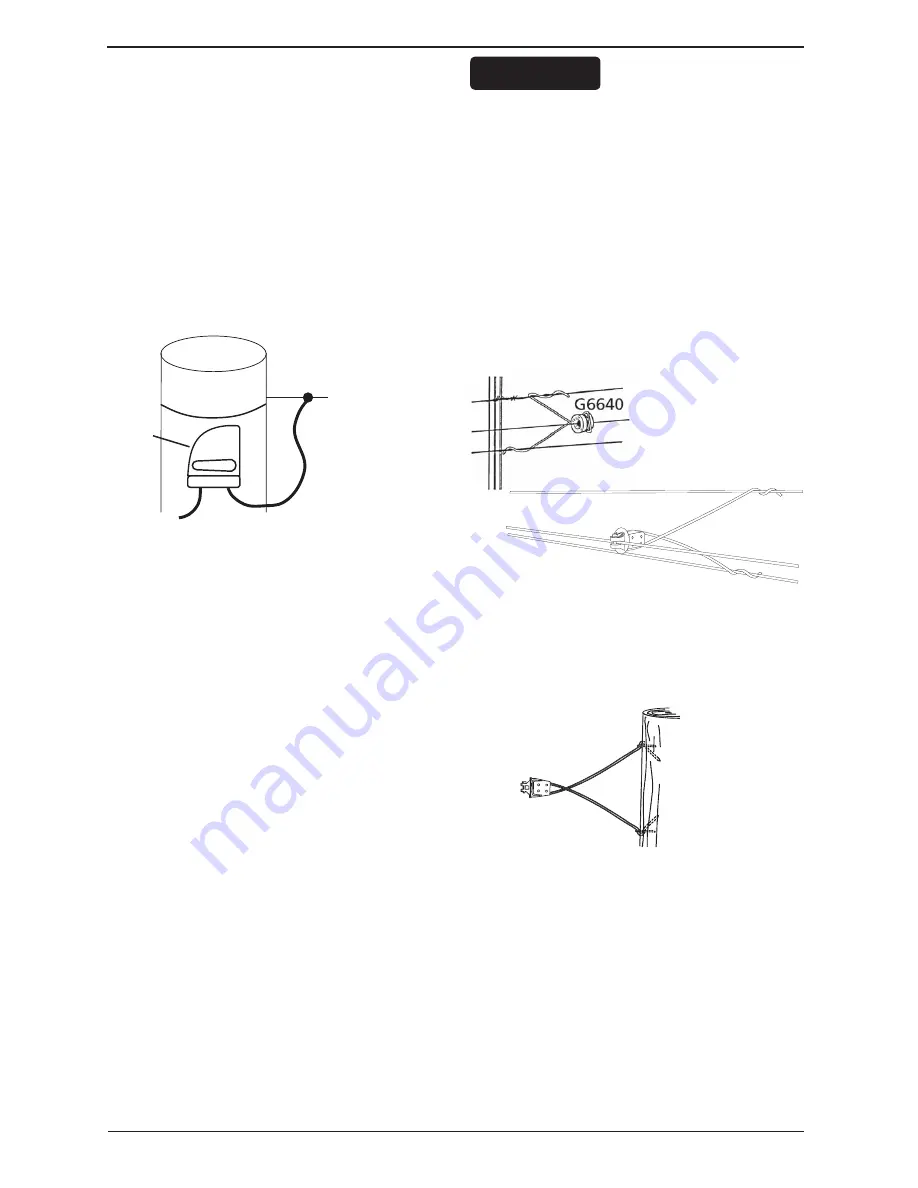
32
Gallagher 3E1164 Power Fence Systems User Manual
Installing a Permanent Power Fence
TM
Install cut out switches
Cut out switches, see Figure 4.29, (G6076
and G6087) are handy for isolating
different sections of the fence. This is
useful when you are looking for faults or
carrying out maintenance. Place cut out
switches at gateways or junctions where
either single or multiple fence lines can be
turned off (see Figure 4.1).
Connect the undergate cable to one switch
terminal and the tail of the second line
wire to the other terminal.
Figure 4.29
4.4.3 Fence protection
Old non-electric fences can be made to
last for many more years by attaching
offset brackets with an electrified wire on
one or both sides of the fence.
Attach single offset wires at two thirds
the height of the animal to be controlled.
If sheep and cattle are in the same area it
is better to use two offset wires (one for
sheep, one for cows). However a single
wire three quarters the height of the sheep
will still protect the fence from both animal
types.
If the old fence is tangled or has broken
wires, it will need to be tidied up.
Otherwise you will run the risk of loose
wires causing accidental shorting on the
offset wire. Remove the worst wires and
tighten the others where possible.
On level ground, offset brackets should be
spaced approximately 20m (66ft) apart.
Over uneven ground, space the offsets
closer to maintain a constant wire height
above the ground. Attach them next to
posts for extra stability.
Choosing offset brackets
Wire offsets
Made from galvanised high tensile spring
wire, these offsets twist onto existing
fence wires.
Figure 4.30
Wooden post offsets
Made from galvanised high tensile spring
wire this offset is stapled to wooden posts.
G6620
Figure 4.31
G6290
To energizer
To fence
Cut out
switch
HANDY HINT
















































